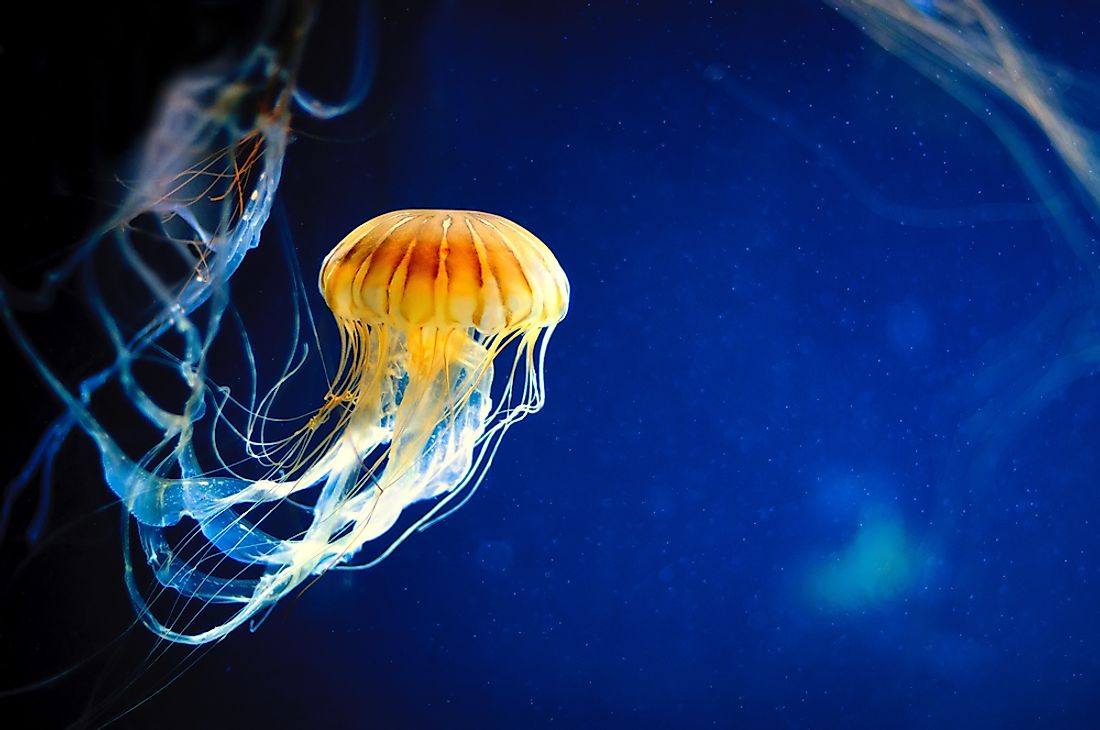What is an Osmoconformer?

What Is An Osmoconformer?
The term osmoconformer is used in biology to describe marine creatures who maintain an osmolarity similar to the one in the surrounding environment. Most of the marine organisms are classified as osmoconformers as well as several insect species. The opposite of osmoconformer is osmoregulator, where most animals fall under as well as human beings. Osmoregulators rely on excretory organs to maintain water balance in their bodies. A person lost at sea, for example, stands a risk of dying from dehydration as seawater possesses high osmotic pressure than the human body.
The Process
Osmoconformers are organisms living in the marine environment and are capable of maintaining the internal environment, which is isosmotic to their outside environment. The osmolarity or the osmotic pressure of the osmoconformer's body cells has equal osmotic pressure to their external environment, and therefore minimizing the osmotic gradient, which in turn leads to minimizing the net inflow and outflow of water in and out of the organism’s cells. Although osmoconformers have an internal environment that is isosmotic to their surrounding environment, there is a huge difference in the composition of ions in the two environments so that it allow the critical biological functions to take place. One advantage of osmoconformation is that the organism does not use as much energy as osmoregulators to regulate the ion gradients. Nevertheless, there is minimal use of energy in ion transport to ensure there is the correct type of ions in the right location. However, the downside of osmoconformation is that the organisms are subjected to changes in osmolarity of their surroundings.
Characteristics Of Osmoconformers
Osmoconformers are well adapted to seawater environments and cannot tolerate freshwater habitats. The organisms have permeable bodies which facilitate the in and out movement of water and, therefore, do not have to ingest surrounding water. Osmoconformers such as sharks hold high concentrations of waste chemicals in their bodies such as urea to create the diffusion gradient necessary to absorb water. Sharks remain one of the most adapted creatures to their habitat due to such mechanisms. However, Osmoconformers are not ionoconformers, meaning that they have different ions than those in seawater. This factor enables important biological processes to occur in their bodies. The organisms have adapted to their saline habitats by utilizing the ions in the surrounding habitat. Sodium ions for example, when paired with the potassium ions in the organisms’ bodies, aids in neuronal signaling and muscle contraction. Some osmoconformers are also classified as stenohaline, which means that they are unable to adapt to a huge variation in water salinity. The word stenohaline is broken down into steno to mean narrow and haline which translates to salt. If a stenohaline organism is transferred to an environment less or more concentrated than marine water, its cell membranes and organelles end up getting damaged. A euryhaline on the other hand thrives in variations of salinity by use of a variety of adaptations.
Examples Of Osmoconformers
A majority of marine invertebrates are recognized as osmoconformers. Echinoderms, jellyfish, scallops, marine crabs, ascidians, and lobsters are examples of osmoconformers. These organisms are further classified as either stenohaline such as echinoderms or euryhaline such as mussels. Some craniates as well are osmoconformers, notably sharks, skates, and hagfish. The internal ion composition plasma of the hagfish is not the same as that of seawater as it contains a slightly higher concentration of monovalent ions and a lower concentration of divalent ions. There exist vertebrate who are osmoconformers as well such as the crab-eating frog. This animal regulates the amount of urea it excretes and retains to create a diffusion gradient for the absorption of water. This frog is unique since it can survive in diverse saline environments. Tadpoles can live in salinities reaching 3.9% while adults thrive in salinities of up to 2.8%.











